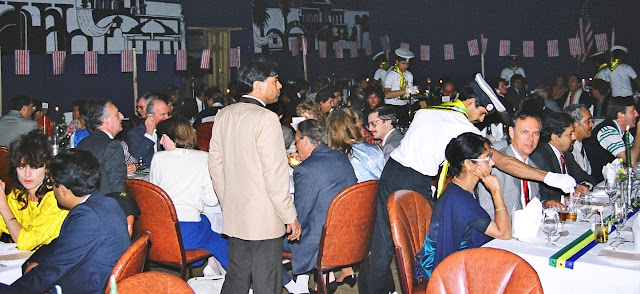A tour of what was, for some twenty years in the early part of the 19th century, the wealthiest sugar producing region ion the Caribbean. The first stop a sugar plantation in restoration, starting with the great house and the watchtower and from there on to the remains what had been the slave quarters. The second --- Iznaga --- was fully restored with the main room of the great house now a restaurant; the landscape is dominated by a very tall watch tower.
... Artisan vendors all around....appeared to be authentic ( i.e .not made in China) and of good quality. The tower at Iznaga, as at the first sugar plantation, was to keep a look - out on the slaves working the fields .... how they were progressing with their tasks and to prevent their from running away.
The main house had a "trapiche" on exhibit just outside....manufactured in Buffalo, New York. So many thoughts provoked from that one object:
a) "Trapiche" is a famous wine label in Argentina...but it have to do with sugar [production? Both in Argentina and Cuba, in the 19th Century, they were doing the same thing: animal-powered machines which squeezed/pressed out the plant's juice for further processing, wine in Argentina, sugar in Cuba. The practice survives to this day, it's what organic juice producers call cold-pressing ;
b) the manufacturer's plate identified the press as being made in ..Buffalo, New York !....when that was the industrial giant of the "America West"t, pre-Cleveland, pre-Chicago...and now, like the sugar plantations in Cuba in a somnolent state.
c) slavery in Cuba ....I don't know why I was surprised, perhaps because I've long-heard that one of the principal differences between Spanish and English colonial labor practices was that Spanish- America was free of slavery (although the encomienda system was little better) whereas it was common practice in Anglo-America --- including regions as far north as New York and Boston , truth be told.
However, Cuba, the remaining Spanish crown jewel in the Americas -- after they were thrown out of everywhere else on the continent(s)--- was sustained entirely by a sugar-based economy built on the backs of slaves-----a practice not abolished until 1886, just a couple of years before Brazil did the same--- yet some twenty years after the conclusion of the American Civil War. All of which is to say Imperial Spain ----- to just about up to the time of its eventual collapse in 1898 --- legally sanctioned slavery. Needed to be reminded.....as a Dickensian character of that time might have said .."t'was a bad business all 'round".
Meanwhile on the Anglo side -- the British in this instance-- were the strongest of abolitionists on the one hand, and on the other hand engaged "contract labor" , the notorious coolie system. They lured impoverished Bengalis (East India) to the Fiji Islands, Trinidad, Guyana, South Africa...to work sugar fields there . The "fortunes" so blithely mentioned by Jane Austen ( and repeated in English period dramas so beloved by the Anglo-besotted PBS viewers in America) are in no small measure due to these labor "practices".
The last sugar plantation visited belonged to the wealthiest sugar baron of his day : Jose Mariano Borrel y Lemus, the scion of of Catalan immigrants whose home is probably the best preserved from that Golden Era of sugar production. It's a "classic": air flowing design, light furniture with woven strands from sugar cane plants as backing, private chapel, study looking out on his extensive fields.
Elsewhere, Borrel had huge "town houses" in Trinidad and La Habana, a dozen children, legitimate and illegitimate etc. etc. ..absolutely contemporary, in life-style, to his socio-economic counterparts in Ante- Bellum New Orleans, Savannah, Charleston.
Borrel lived long enough to participate in the first of the Cuban wars of independence .. on the Spanish side, of course as a "Coronel de las Milicias Blancas" ...for which, in gratitude, the Spanish Queen bestowed upon him the Imperial Title of Marquis of Guaimaro.
Truly, Cuba has always been right in the middle of whatever have been the historical ebbs and flows of the American Continent(s) ....since the very, very beginning. Fascinating...

























